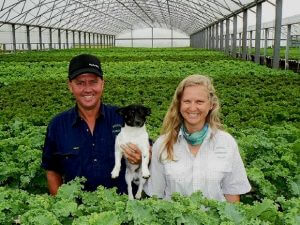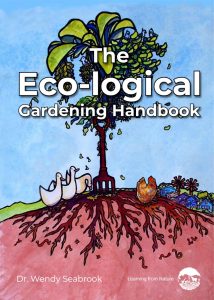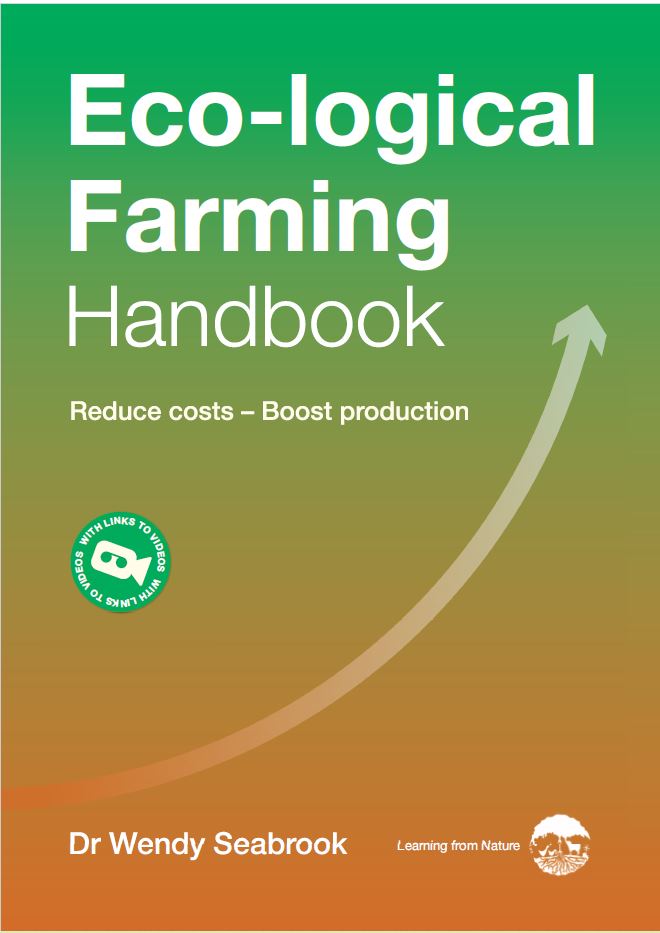Would you make visiting a hydroponics farm a priority to find out how to control insect pests in your garden or farm? Growing vegetables in plastic trays without soil, and drip feeding them liquid fertiliser, seems a world away from how we envisage using eco-logical approaches to control insect pests.
That’s why I was a little sceptical when a friend insisted on taking me to visit Graham and Fiona Grant’s hydroponics farm in northern NSW, Australia.
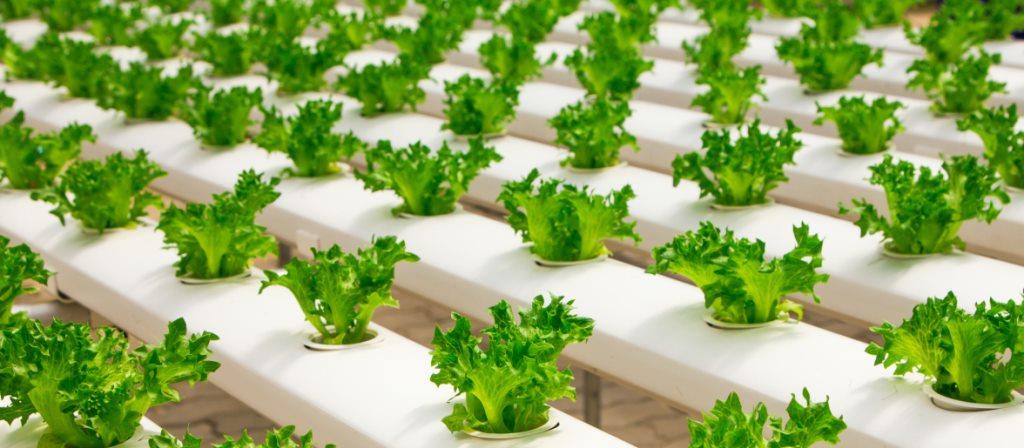
Wardell Hydroponics produces Asian greens, lettuce, and kale
When Graham and Fiona took over the business a few years ago, they struggled to grow greens without the leaves getting decimated by plagues of insects. They fought back with broad action chemical pest controls, killing everything.
Even spraying 3 to 4 times a week wasn’t working. The insect pest populations just bounced back. It was costing them a fortune.
Now Graham and Fiona do things differently.
Controlling Insect Pests Eco-logically
Recognising that they were using the sprays as band-aid solutions, they looked at why their crops were getting insect damage and realised the source of the problem was insufficient predators and parasites to control the pest populations.
Their first response was to replace the synthetic pest controls with ‘bugs to control bugs.’ This is a common approach. Companies worldwide specialise in supplying insect eggs for the predators and parasites of major pests.
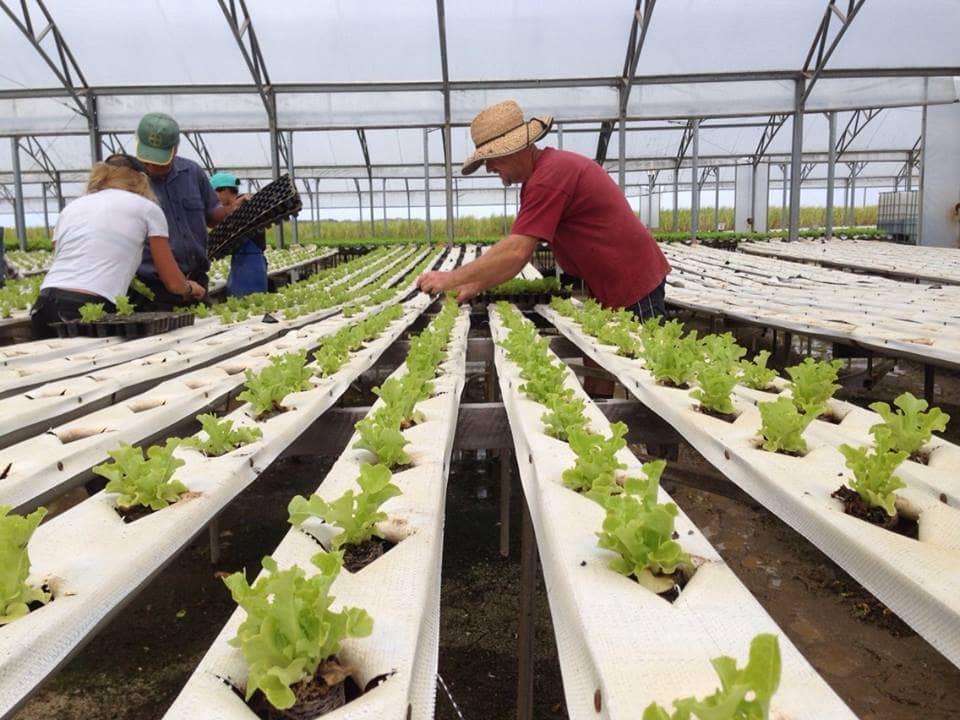
“Buying in bugs wasn’t ideal, though,” Fiona said. “We’re still reliant on purchasing pest controls, and using organic sprays as emergency backups. We wanted to solve the problem for the long term, rather than having to regularly buy-in stuff.”
When I visited their farm in July 2017, they were experimenting with growing plants around their sheds to provide food and habitat for the predators and parasites of their insect pests, thereby enabling their ecosystems to provide natural pest control.
“We want the beneficial insects to complete their life cycle on our farm and rebuild their populations, rather than us buying them in,” Graham said. Plus, the insects are on-site, ready to breed rapidly in response to pest outbreaks.
Graham and Fiona also plant sacrificial crops their pests prefer to eat in approximately every seventh row within their hydroponic system. Because these plants attract pests, monitoring and controlling their numbers is more manageable.
“Now we get more sellable produce – plants are bigger with less damage to the outer leaves.”
Getting Practical
An increasing number of farmers and gardeners are experimenting with using eco-logical approaches to control pests. They’re applying eco-logical principles to develop practices that work well for their growing conditions and the food they grow.

Pest control and pollinator strip in a field
Here are some useful resources to help you on this journey…
- What is Regenerative Farming and Gardening
- Principles of Regenerative Farming and Gardening
- Manage Insects On Your Farm- A Guide to Ecological Strategies
- Mimicking Nature: Woodleaf Farm’s Ecological Design
Or get the Eco-logical Farming or Gardening Handbooks to give your whole ecosystem an upgrade!
